Fly birds
Fly birds
After the flamingos, my favorite bird is the hummingbird.
I was lucky enough to see one once when I went to see a friend who had gone to Texas for a year with a host family. They had an apartment in the Gulf of Mexico and we went there on weekends. People had attached to their balcony bottles of sweet water that attracted the flies that came to drink this artificial nectar.
What impresses me, in addition to their beautiful colors, is the way they know how to fly like helicopters.

Fly birds are classified in the family Trochilidae. This name refers to a zoological genus, hummingbird that includes only four species among these birds.
The term hummingbird can refer to all flies while the family Trochilidae also includes birds called bec-en-sickle, hermit, lance-bearer, campyloptere, mango, flirt, emerald, ...
The hummingbird is independent and relatively aggressive, indeed, some species even dare to attack hawks venturing on their territory. Their aerial acrobatics are mostly composed of gestures wanting to demonstrate their aggressiveness. Most of the behaviors observed are aimed at protecting the food source. The weakness of the nutritive supply of their diet compared to the effort to obtain it is an explanation of this aggressiveness.
They have several ways to feed themselves and occupy the space, in fact, the territorial ones exploit plants with flowers very rich in nectar and tend to be satisfied with restricted territories that they defend with beaks.
They move little, unlike trappers who are interested in less melliferous flowers and therefore need to cover more land to support themselves. GPs are not content with the nectar of flowers alone; they also suck juices flowing from damaged or overripe fruits, catch insects in flight or explore the flowers and leaves for those who get stuck in the juice.
The cockroach hummingbirds even plunder the cobwebs, which they adroitly appropriate the victims stuck in it. Droppers, fairies or hummingbirds pierce the base of the long corolla to collect the nectar because their bill is too short to go to the bottom.
Description
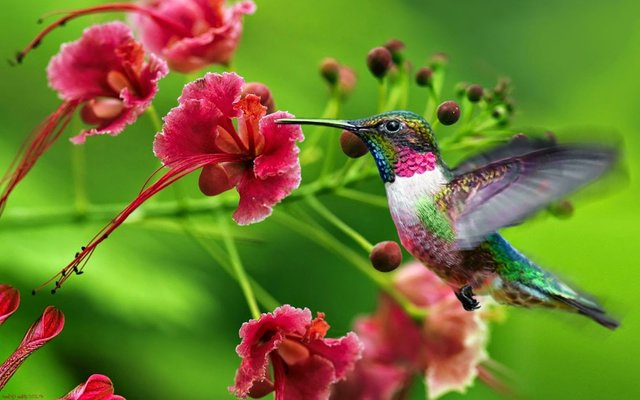
The fly birds have different names such as hummingbird, beak-sickle, hermit, lance-bearer, campylopter, mango, flirt, emerald, dryad, sapphire, ariane, brilliant, inca, heliange, erione, breeches, door -train, metallure, sylph and loddigesia.
Cubans call it zunzuncito, that means little zunzun. Zunzun is an onomatopoeia imitating the sound made by the very fast flapping of the wings of the hummingbird.
They are tiny birds that measure about 2 to 22 cm and up to 35 cm in species with a long tail.
They have ten rectrices (caudal feathers of a bird). Their wings are long and narrow and the beats of them are very fast. The length of their tail is variable. Their thin beaks are of extremely variable length depending on the species, from short beaks of 1.5 cm to very long of 10 cm, from rectilinear to curved. The legs are short and end with tiny, fragile feet. They do not allow them to land on the ground but only on a branch.
Plumage color varies from brown to green or from red to black. Their color is often similar to that of the flowers they visit by mimicry. They have very colorful throats or heads. Some feathers are reflective and have different metallic colors depending on the angle from which the light comes. Their feathers are not held together like other birds. This special structure of iridescent feathers, with a flattened shape, contains air particles that make it lighter than other birds.
Males are more colorful and mimicry of females is more efficient. The recognition of males is easy thanks to the differences in coloring. In females of the species with colored males or with duller taxa, the length, the shape of the bill and their songs are determining criteria for their identification.
The smallest hummingbird lives in Cuba, it weighs 2 grams, Helen's hummingbird females barely exceed 5 to 6 cm in length and lay the smallest eggs in the world while the largest are giant hummingbirds, they weigh 20 grams and measure 21 cm.

In comparison with their weight, the hummingbird has the largest heart of all birds. The latter represents 2.4% of its body weight against 1% in the raven for example. Flight performance is made possible by the muscle mass of the pectoral muscle which is 25 to 30% of its weight compared to only 5% in humans. In fly birds, the flexibility of the shoulder joint makes them able to beat the wings in all directions. Their wing consists essentially of their "hands" while their arms are very short, unlike other birds.
Food
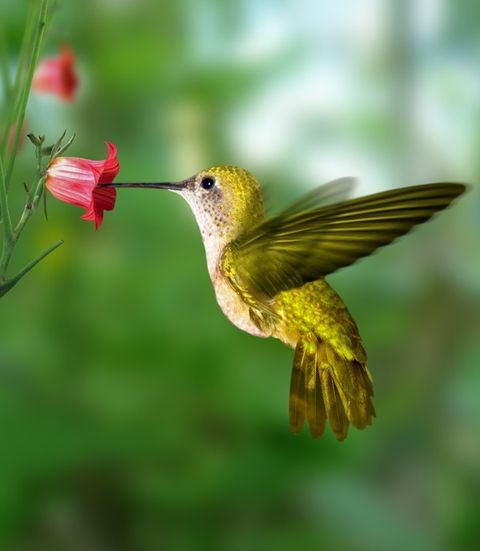
The flies are nectarivorous, the nectar constitutes 90% of its diet but it also feeds on insects.
The insects they catch in flight, that they harvest on the leaves or that they remove spider webs are indispensable to them as protein intake.
Some species feed on the sap that flows from trees after the green picks have dug a hole in search of insects or sap. They consume on average half of their weight in sugar each day. They feed 5 to 8 times per hour for 30 to 60 seconds each, which is huge compared to their size.
The fly-birds reach and absorb the nectar of the flowers thanks to their long extensible tongue separated in two parts at its end and furnished with ribs. Their tongue comes in and out like a spring.
Their tongue reaches the nectar in the corolla, then it rises along it by capillarity. It is finally sucked when the tongue is back in the beak.
Some flowers and the beaks of the flies that visit them would have known a process of coevolution. Indeed, the flowers benefit from the passage of the birds fly in their corolla to deposit their pollen on the head of the bird-fly which visits it. These flowers benefit from this bird by increasing the probability that this pollen is deposited in another flower of the same species and fertilizes it. The evolution of the oral system of the birds fly, tongue and beak, was made in parallel with the adaptation of the flowers, incredible not? Nature is well made !
Reproduction
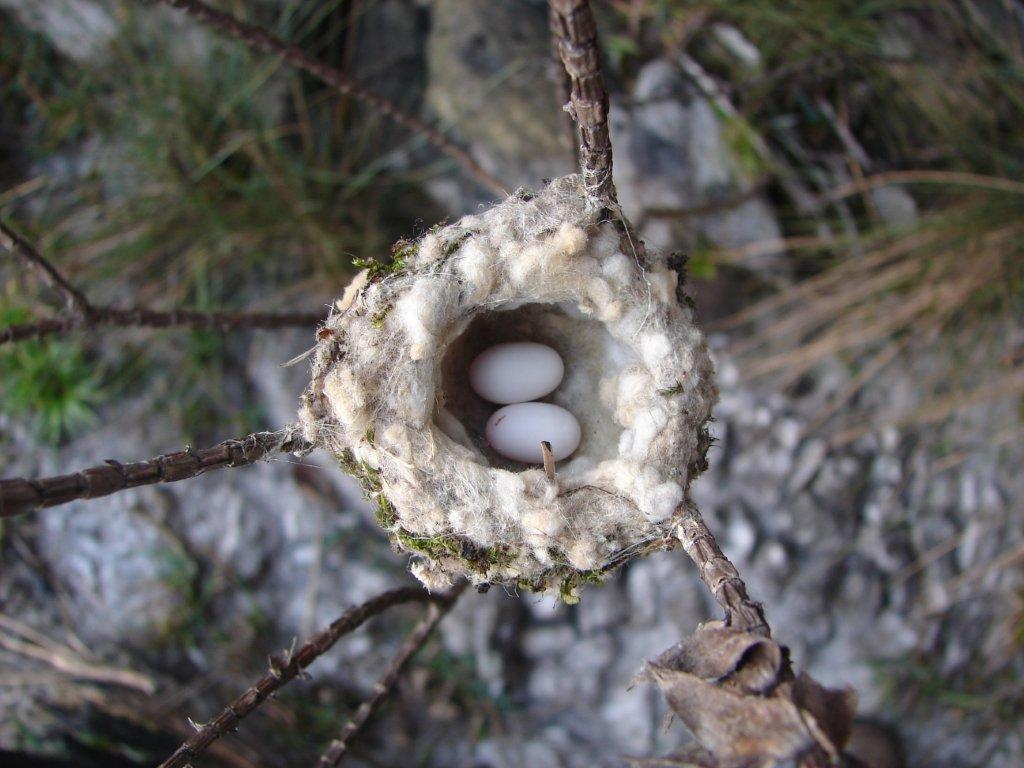
Once mated, the female builds the nest and raises the young alone; the male tries to seduce other females.
Generally two tiny eggs are laid in a nest made of plant material retained by spider webs or insect bristles. The eggs are very well protected in their nest.
Some specimens lay in the nest of other females. Incubation usually lasts 14 to 19 days. The chicks are born blind and almost naked, they have just two rows of tiny feathers on their backs. These vibrate at the arrival of the mother and warn the chicks of the moment of the beak. They are mainly fed with insects for a period of 7 to 12 days until they are able to control their temperature. The female then feeds them 18 to 25 days after they have left the nest.
Communication
The vocal apparatus of the fly bird is simple compared to that of singing birds. In spite of this underdeveloped apparatus, some tropical flies emit elaborate songs. These are inaudible to humans because of their high frequencies for our hearing aid. The singing of females is different from that of males.
In general, flies produce three types of sound signals, a slight buzz, a rattling sound and a chirp. The buzz, produced by the wings, comes from the friction of the air through the feathers. The most melodious bird of flies is the broad-tailed hummingbird, which produces a very musical sound with its wings like a locust.
The different buzzes make it possible to distinguish certain species from each other. The buzzing is more often emitted by males.
They also communicate using their plumage. They unfold the feathers of the throat or neck in order to address a message.
They also exhibit their open tail. This is more common in females and juveniles who wish to highlight the white tips of the caudal feathers.
There are several types of aerial parade, there is one particularly original, in fact, the two individuals fly from top to bottom on a certain height while facing a distance of less than 1 meter one of the other, this parade is accompanied by chirps.
Another so-called horizontal flight is recognized along a short horizontal trajectory accompanied by chirping or buzzing. This behavior would be used to testify his aggressiveness vis-à-vis another bird-fly or as courtship.
Predators
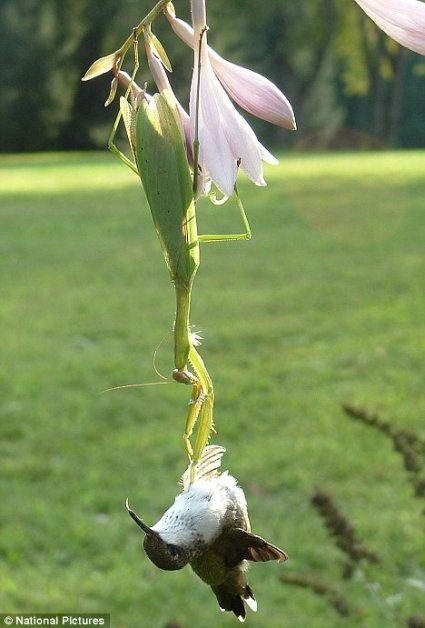
Their main predators are small cats, snakes and other birds such as hawks for example.
Cats are also big predators for them.
But their most dangerous predators are the species that plunder the nests. To avoid attacks, females regain their nests by flying in zigzags or semicircles to avoid leading a predator directly to the nest.
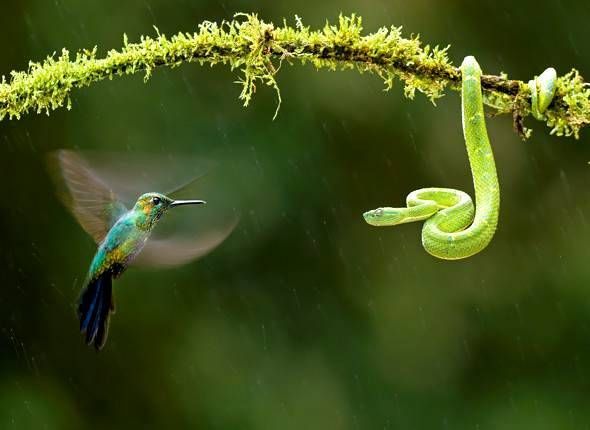
I hope you enjoyed this article on fly birds. I wish you an excellent evening and a good Sunday ; o )
Hello,
We have found similar content:
Not indicating that the content you copy/paste is not your original work could be seen as plagiarism.
These are some tips on how to share content and add value:
Repeated plagiarized posts are considered spam. Spam is discouraged by the community, and may result in action from the cheetah bot.
If you are actually the original author, please do reply to let us know!
Thank You.
More Info: Abuse Guide - 2017.
Today you decided to dedicate your blog to birds, not bad :)
Hummingbird is a bird that deserves special attention. It can be called special due to the speed with which its wings move. Probably interesting to see her live on the balcony :)
Wow, how much interesting I learned from reading your post, this definitely widened my horizons, especially I like their way of protecting their nests :)
Have a nice weekend:)
Nice! Thanks for sharing
What a wonderful little bird, as if from a fairy tale! Yes, and buzzes. Pretty!
humming bird is certainly on my list of favourute birds, small and colourful. I think they are the symbol of a sonorous voice. Thanks for sharing, have a great wknd too
Nice shallow depth am @majot have followed you and looking forward to get more from you
oohh my goodness ! such a coulourful bird..i swear i didnt saw the humming bird before..these shots are breathtaking
wow.....hear some amazing bird photography...i like bird....i hope everybody like your post...thanx for shear it
This is beautiful.
UPVOTED!
This content is rich. You did well. Thanks.